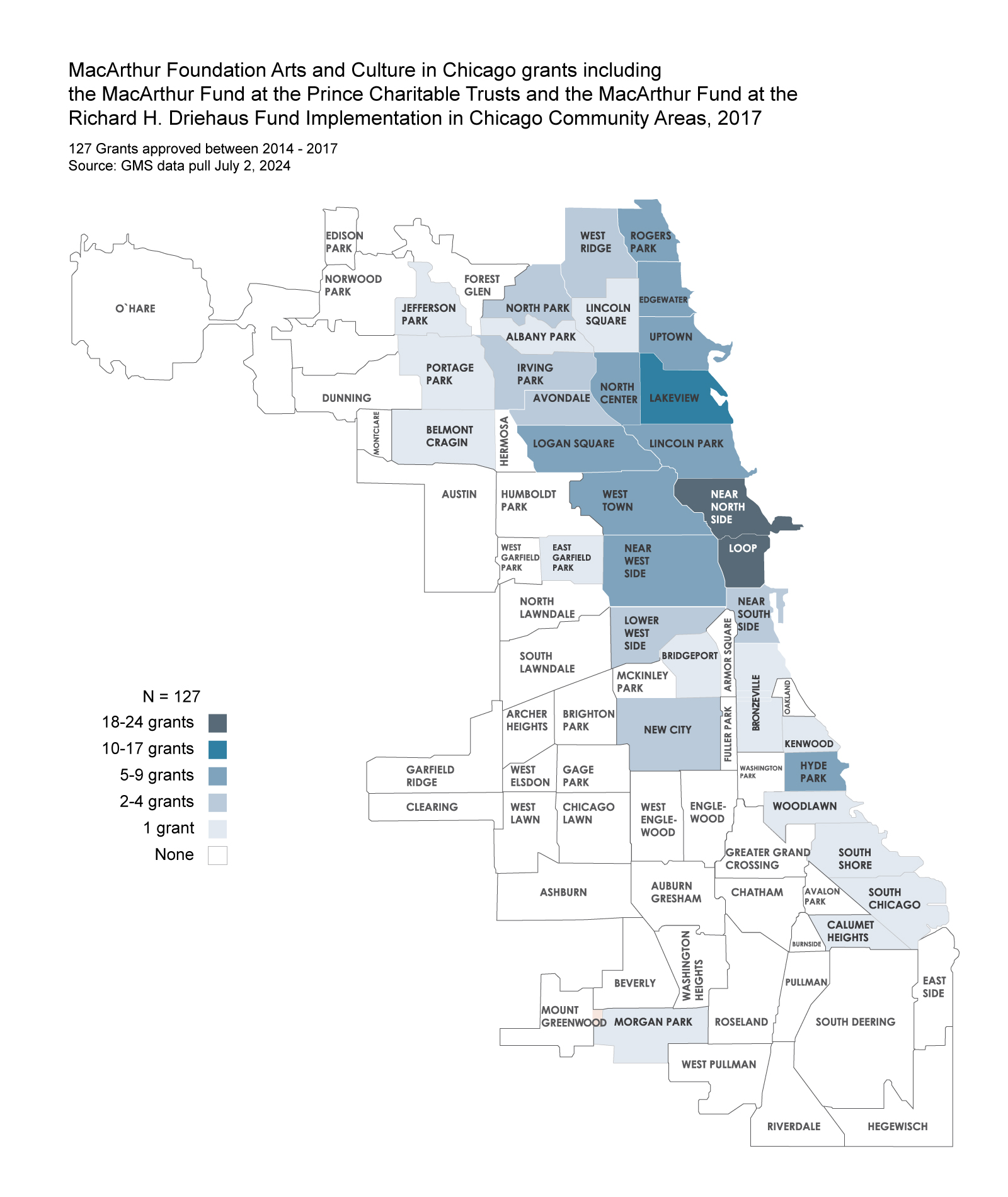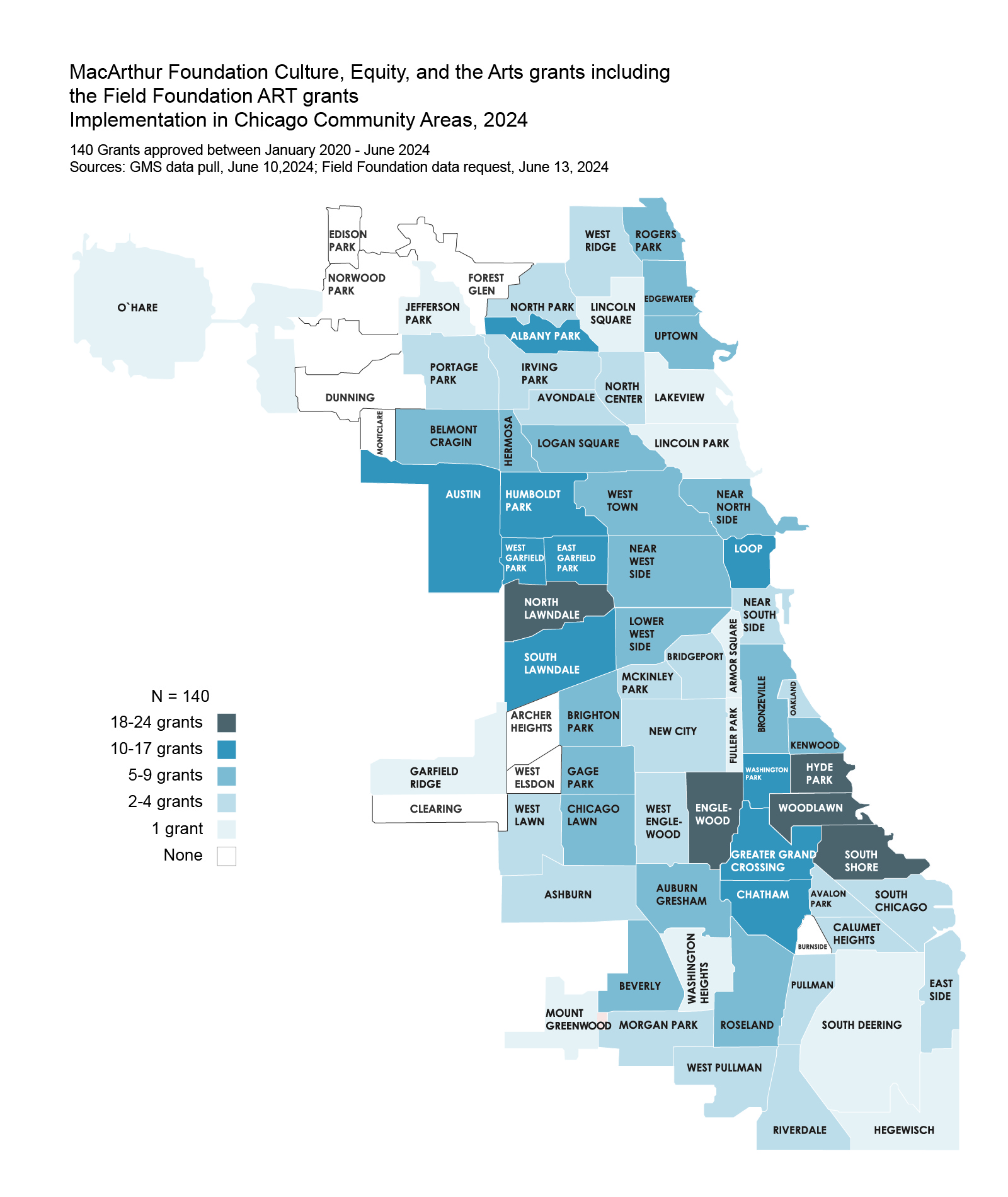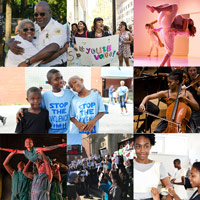Tara Magner, Director, Chicago Commitment, shares how changes to the Culture, Equity, and the Arts Program have transformed the impact of our arts grantmaking in Chicago.
This marks the sixth year that our Culture, Equity, and the Arts (CEA) Program has utilized a participatory grantmaking process to recommend awards to arts and cultural organizations in Chicago. Each year, we invite eight to twelve individuals from outside the MacArthur Foundation to review applications, discuss them together, and then recommend to our Staff which organizations they believe should be awarded CEA’s three-year general operating support grants.
We have documented the CEA process from the beginning, first writing in 2019 about what prompted us to fundamentally shift our practices to ensure that our arts funding was rooted in equity. A map we shared, showing a snapshot of our grant recipients in 2017, demonstrated the urgent need for change. We realized that our then-longstanding Arts and Culture in Chicago program was not supporting organizations that represented the full geographic diversity of the city. Even though we had mechanisms for supporting smaller-sized organizations, our prior grant guidelines led us to primarily fund organizations located downtown or on the North Side.
We realized at that time that our then-longstanding Arts and Culture in Chicago program was not supporting organizations that accurately represented the city.
In response, our late colleague Geoffrey Banks played a critical role in designing our participatory process and executing it for the first five years. His dedication to the power-shifting potential of participatory grantmaking is one of the many attributes for which he is remembered and celebrated.
The fundamentals Geoffrey instilled in CEA are still present, including an annual assessment with our participatory grantmakers of what is working well and what should be revisited. We deeply value their advice and have worked to adapt the program each year based on their feedback. These individuals typically serve for three-years and as part of our commitment to transparency, we ask permission to publish the participatory grantmakers' names when they rotate off the panel.
Incorporating Community Feedback
The most recent cycle of CEA's participatory grantmakers urged us to consider a number of issues and trends as we continue to improve the program. These include how to assist arts organizations with long-serving executive or artistic directors to plan ahead for leadership transitions. The participatory grantmakers also asked us to consider how we define arts-centered organizations. We describe arts-centered organizations as those in which art is integrated into an organization’s mission but is not the only aspect of its work. For example, an arts-centered organization might be focused on gun violence prevention, with arts programming being vital to all of its work.
The participatory grantmakers recommended changes to our grant application that facilitated applicants’ ability to fully describe their missions, programs, and commitment to equity in their written and visual submissions. Relatedly, the grantmakers suggested that we advise grant seekers to fully describe the longevity of their relationships with community-based organizations and programs.
As a result of that criteria, six years into CEA, our mapping of grantee headquarters’ locations has evolved to be more geographically diverse.
We have seen the participatory grantmakers take the CEA guidelines very seriously—considering grant applicants’ commitment to equity, collaboration, connectivity to the communities they serve, and relevance to contemporary social issues. As a result of that criteria, six years into CEA, our mapping of grantee headquarters’ locations has evolved to be more geographically diverse. Grantees new to MacArthur following the transition to CEA include Maywood Fine Arts, Palenque LSNA, the Chicago Center for Arts and Technology, and Arts of Life.
Relatedly, when CEA was launched, many of the large, relatively well-resourced, often downtown-based arts institutions in Chicago feared that they would not be recommended for future funding. While it is true that some of the organizations that we supported for decades under the former Arts and Culture in Chicago program have not received grants under CEA, many have retained MacArthur funding under CEA’s equity-based guidelines. These include the Museum of Contemporary Art, Joffrey Ballet, Newberry Library, Chicago Botanic Garden, Chicago Public Media, Chicago Shakespeare Theater, Hubbard Street Dance, Peggy Notebaert Nature Museum, and Window to the World (WTTW). These Chicago cultural institutions have demonstrated a strong and enduring commitment to equity under our CEA criteria.
Our experience with participatory grantmaking in the arts continues to be a learning opportunity for us, but six years into CEA, we remain steadfast in our belief in this community-informed, trust-based, and power-shifting process.







